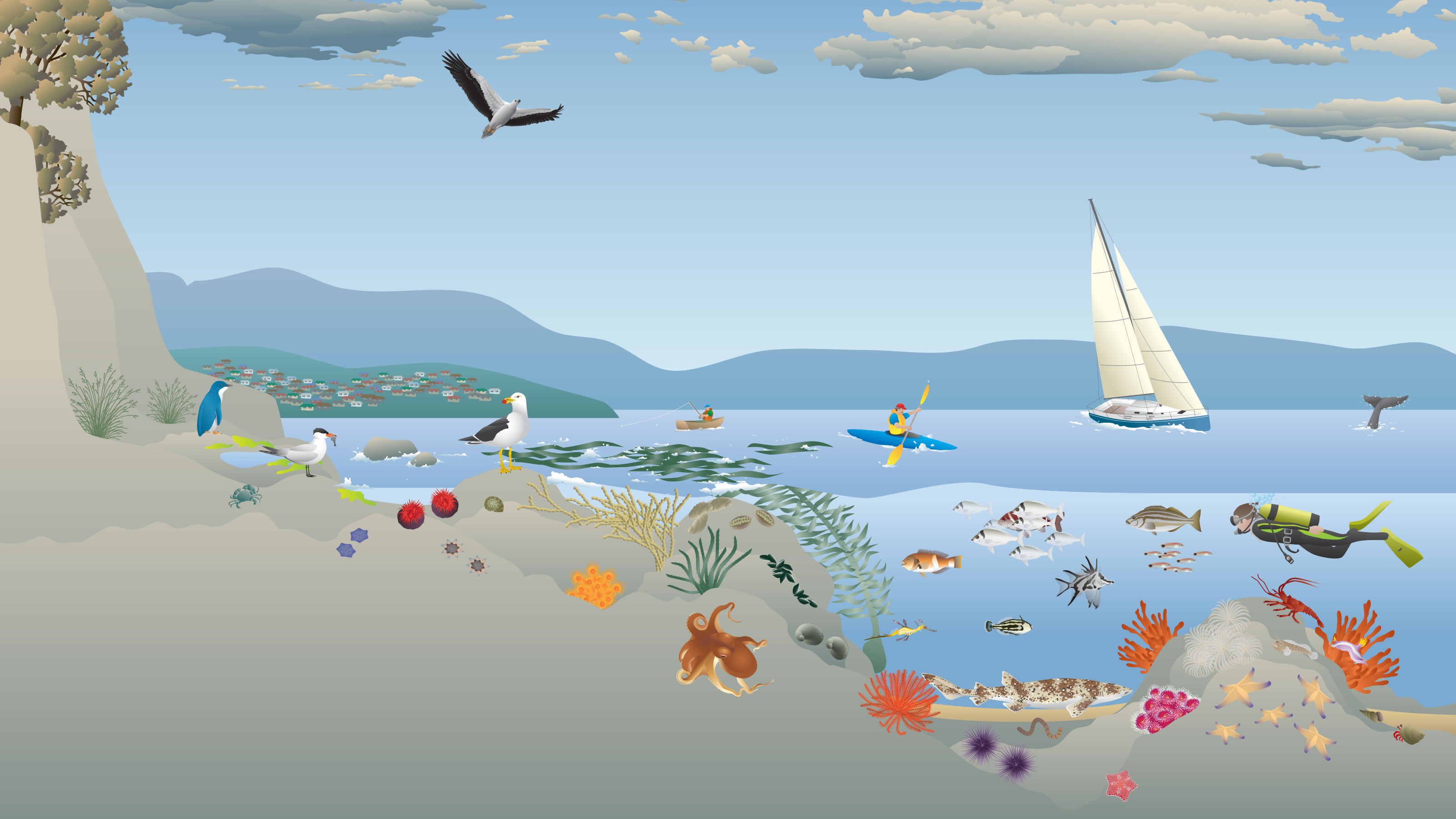The rocky reefs of southern Tasmania are considered to be among the most diverse marine habitats in Australia, with hundreds of different species contained within a small area.

- Sea lettuce
- Waratah anemone
- Turban shell
- Blue mussel
- Pacific oysters
- Shore crab
- Giant kelp
- Velvet seaweed
- Black lipped abalone
- Eight-armed seastar
- Regular seastar
- Finger sponge
- Jewel anemone
- Tube worm
- Short-tailed sea slug
- Maori octopus
- Biscuit star
- Orange feather star
- Northern Pacific seastar
- Purple urchin
- Southern rock lobster
- Weedy seadragon
- Long-snouted boarfish
- Tasmanian blenny
- Banded morwong
- Draughtboard shark
- Southern hulafish
- Toothbrush leatherjacket
- Blue-throated wrasse
- Crested tern
- Little penguin
- Pacific gull
- White bellied sea eagle
Click or tap on a species to learn more.
The Habitat Atlas indicates that there are about 3.3 km² of rocky/cobble reef remaining in the Derwent Estuary predominantly in the lower estuary and along the coastline between Taroona and Tinderbox. There is also about 0.3 km² of kelp forest in this area. There are two marine protected areas in this region: the Crayfish Point Scientific Reserve (just off the Tasmanian Aquaculture & Fisheries labs) and the Tinderbox Marine Reserve.
Community types
Did you know?
- A recent survey at the Crayfish Point Reserve documented thousands of crayfish living in this small area.
- An inventory of Derwent Estuary rocky reefs was conducted in 2010. See the report for more details.
Things to explore
- Visit the Tinderbox Marine Reserve and underwater snorkel trail to learn more about the plants and animals living in rocky reef communities.
- Explore tidal pools along rocky foreshores to discover some of the plants and animals found in rocky reef habitats.
Educational resources
To further explore this habitat and others, check out our educational resources.
